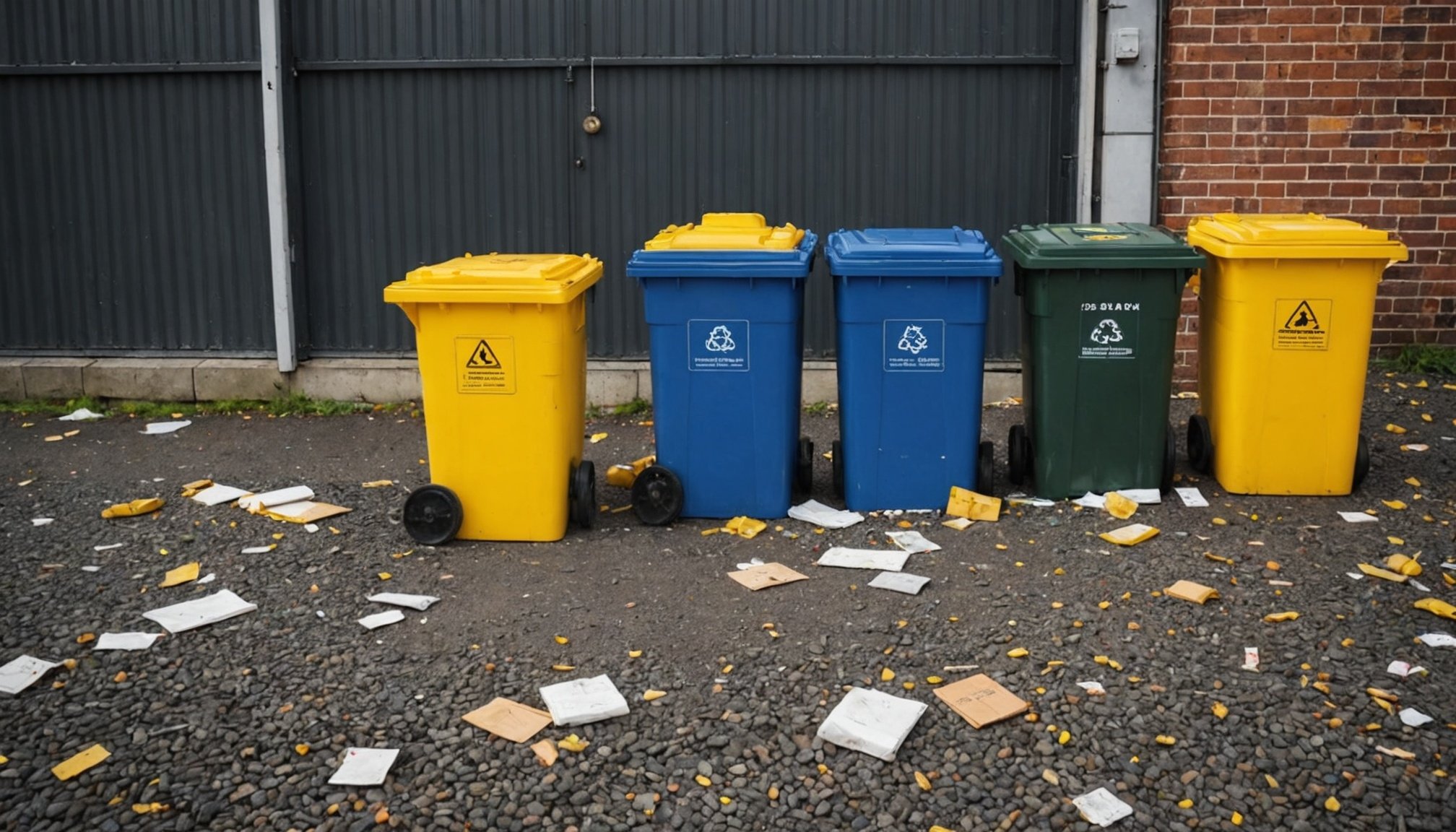Overview of UK Hazardous Waste Regulations
Navigating the UK hazardous waste regulations is essential for businesses to ensure both legal and environmental compliance. Understanding the key legislation forms the backbone of effective hazardous waste management. In the UK, this involves adhering to several key pieces of legislation, including the Environmental Protection Act 1990, which outlines the responsibilities for waste disposal and management. The Hazardous Waste (England and Wales) Regulations 2005 further establish protocols for controlling hazardous waste to protect the environment and public health.
Compliance with these regulations is not just a legal obligation but a crucial component of environmental protection. Improper management of hazardous waste can lead to significant environmental degradation, endangering ecosystems and public safety. Consequently, businesses must prioritize regulatory adherence.
Also to discover : Successfully Navigating UK Legal Compliance: Essential Strategies for Transitioning to Cloud-Based HR Solutions
The hazardous waste regulations are dynamic, with updates ensuring that they keep pace with emerging environmental challenges. Recent changes emphasize stricter classification and labelling requirements, reflecting the growing importance placed on accurate waste identification to prevent mishandling.
In an evolving landscape, ongoing education and adaptation to new legislation are key. Businesses must stay informed about updates and incorporate these into their waste management strategies to enhance their compliance efforts and safeguard the planet.
Also read : Safeguarding Intern Rights in the UK: Legal Tactics to Avoid Exploitation and Adhere to Labor Regulations
Compliance Strategies for Hazardous Waste Management
Effectively navigating hazardous waste compliance strategies involves a multi-faceted approach, crucial for ensuring regulatory adherence. Here, we outline the essential steps businesses should take.
Steps to Ensure Compliance
-
Implement Comprehensive Safety Data Sheets (SDS): Businesses should develop and maintain SDS for all hazardous materials. These documents are essential for communicating potential risks and necessary precautions.
-
Proper Labelling: Accurate labelling is vital to identify hazardous waste, illustrating its nature, origin, and potential hazards. This clarity helps prevent mishandling and assures compliance with UK standards.
-
Employee Training Programs: Investing in robust training schemes is pivotal. Employees equipped with knowledge on handling, disposal, and emergency procedures contribute significantly to regulatory adherence.
Utilising Training Programmes
Training is a powerful tool for maintaining compliance. Conducting regular sessions ensures employees stay updated on best practices and legislative changes. It empowers staff to manage hazardous waste responsibly, safeguarding both them and the environment.
Incorporating these strategies not only aids in meeting legal requirements but also elevates company reputation and sustainability efforts. By prioritising thorough education and meticulous documentation, businesses can confidently align with hazardous waste regulations and contribute to broader environmental compliance.
Best Practices for Handling Hazardous Waste
In the realm of waste management, adopting best practices is crucial to ensure safety and efficiency.
Waste Segregation Techniques
Proper waste segregation is a fundamental practice that enhances both safety and compliance. By effectively distinguishing between hazardous and non-hazardous waste, companies can prevent cross-contamination and reduce risks. The most successful methods include color-coding bin lids, labelling them with clear descriptions, and providing designated areas for different types of waste. Keeping a consistent segregation system throughout the waste management process helps maintain clarity and minimises errors.
Storage and Transportation Guidelines
Adhering to safe storage practices is vital for hazardous waste management. Containers must be robust, clearly labelled, and designed to prevent leaks. Regulations in the UK demand specific protocols for transporting hazardous waste, mandating the use of licensed carriers and proper documentation. Case studies highlight operations that have successfully used lockable storage units and GPS tracking for transportation, showcasing their efficacy in risk management.
Emergency Response Plans
An effective emergency response plan is key to managing hazardous waste incidents. Essential components include rapid communication protocols, designated response teams, and clear evacuation routes. Successful examples, like a swift response to a chemical spill, underline the importance of preparedness and cooperation with local authorities to mitigate environmental impacts. Establishing comprehensive procedures enhances safety and compliance across all operations.
Case Studies in UK Hazardous Waste Management
Delving into hazardous waste case studies provides valuable insights into effective compliance strategies. Learning from those who have excelled or struggled can be crucial for businesses aiming for improved practices.
Successful compliance examples often highlight organizations that integrate robust waste management systems. One notable case is that of a manufacturing firm that implemented a comprehensive environmental compliance strategy. By using technology for continuous monitoring and detailed record-keeping, they significantly reduced their hazardous waste output. This proactive approach not only ensured regulatory adherence but also cut costs and improved their corporate sustainability image.
Conversely, examining companies that faced penalties due to non-compliance can offer valuable lessons. A transport agency fined for inadequate regulatory adherence sheds light on the importance of proper documentation and employee training. Their failure to follow protocols resulted in both financial and reputational damage.
Best-practice models serve as blueprints for other businesses. Illustrative case studies demonstrate how companies can successfully balance environmental compliance with operational efficiency. By adopting best practices, such as regular audits and investing in staff education, companies can mitigate risks associated with hazardous waste.
These cases highlight the value of learning from both achievements and mishaps, guiding others towards more effective hazardous waste management.
Practical Resources for Compliance
For businesses navigating the complex landscape of hazardous waste management, utilizing practical resources such as compliance templates and checklists can significantly enhance operational efficiency and regulatory adherence.
Templates for Waste Management Plans
A well-structured hazardous waste management plan is crucial. Essential components of these templates include detailed waste categorization, disposal methods, and emergency response protocols. Templates serve as a helpful starting point, providing a structured format that ensures no critical element is overlooked. Businesses can tailor these templates to align with specific industry needs, accommodating differences in waste types and quantities.
Checklists for Compliance
Compliance checklists are vital tools, guiding businesses through the intricate requirements of hazardous waste management. Regular use of these checklists fosters a culture of continuous improvement and compliance, identifying potential gaps before they become issues. They are also instrumental in training and onboarding staff, ensuring everyone is familiar with compliance standards.
Links to Relevant Legislation and Guidance
Staying informed about current legislation is paramount. Access to direct links to key UK laws, such as the Environmental Protection Act 1990, aids in understanding obligations. Additionally, government and NGO resources offer updated guidance, helping businesses remain compliant and environmentally responsible. These resources are indispensable for professionals seeking to deepen their understanding of hazardous waste regulations.











